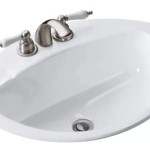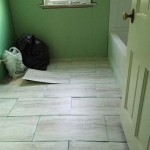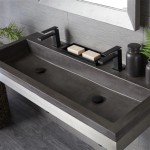Best Way to Seal Bathroom Countertops
Bathroom countertops see a lot of action. From splashes of water and toothpaste to the occasional spilled shampoo, they're constantly exposed to moisture, chemicals, and wear and tear. To keep them looking their best and to protect them from damage, sealing is essential. Sealing creates a barrier that prevents liquids from penetrating the surface, making it easier to clean and maintain. This article will explore the best way to seal bathroom countertops, providing a comprehensive guide to ensure a lasting, protective finish.
Choosing the Right Sealant
The first step in sealing your bathroom countertops is selecting the appropriate sealant. The type of sealant you need will depend on the material of your countertop. Here's a breakdown of common countertop materials and the recommended sealants:
- Natural Stone (Granite, Marble, Limestone): These materials benefit from a penetrating sealer that soaks into the pores of the stone, creating a durable barrier. Look for sealants specifically designed for natural stone, often containing silane or siloxane.
- Engineered Stone (Quartz, Porcelain): Though already non-porous, engineered stone can benefit from a topical sealant. These sealants form a protective layer on the surface, enhancing resistance to stains and scratches. Acrylic-based sealants are suitable for engineered stone.
- Solid Surface (Corian, Wilsonart): Similar to engineered stone, solid surface countertops are relatively impervious to stains and scratches. However, a topical sealant can offer extra protection and make cleaning even easier. Acrylic or polyurethane sealants are appropriate for solid surface materials.
- Laminate: While laminate countertops already come with a protective layer, a sealant can further enhance their longevity and water resistance. Look for water-based acrylic or polyurethane sealants specifically designed for laminate surfaces.
It's essential to read the product label carefully and ensure the sealant is compatible with your countertop material. Consult a professional if you are unsure about the right sealant for your specific countertop type.
Preparing Your Countertops
Before applying the sealant, ensure your countertops are properly prepared. This process involves cleaning and sanding, creating a smooth surface for the sealant to adhere to. Here's a step-by-step guide:
- Clean Thoroughly: Start by removing any dirt, debris, grease, or soap residue from the countertops. Use a mild cleaner specifically designed for your countertop material. For natural stone, avoid acidic cleaners that can etch the surface.
- Sand if Necessary: If your countertops are particularly rough or have scratches, lightly sand them with fine-grit sandpaper. This will create a smoother surface for the sealant to adhere to. Be sure to remove any sanding dust before proceeding.
- Dry Completely: Allow the countertops to dry thoroughly before moving on to the sealing process. Any moisture present can interfere with the sealant's effectiveness.
It's crucial to follow the manufacturer's instructions carefully for both the cleaner and the sealant to ensure optimal results.
Applying the Sealant
Once your countertops are prepped, you can apply the sealant. The application process varies depending on the type of sealant you choose. Here's a general guideline:
- Read the Instructions: Always refer to the manufacturer's instructions for specific application details. They will provide information on the proper application method, drying time, and any special precautions.
- Apply in Thin, Even Coats: Use a clean, soft cloth or sponge to apply the sealant in thin, even coats. Avoid over-applying, as this can lead to uneven drying and a cloudy finish.
- Work in Sections: To ensure even coverage, work in sections of your countertop. Apply the sealant to one section at a time, allowing it to cure slightly before moving to the next. This allows for controlled spreading and prevents the sealant from becoming too thick in one area.
- Let it Dry: Allow the sealant to dry completely according to the manufacturer's instructions. This usually takes a few hours, but it's essential to wait long enough for the sealant to harden before using the countertops.
- Repeat if Necessary: Depending on the sealant type and your countertop material, you may need to apply multiple coats to achieve the desired level of protection. Always follow the manufacturer's recommendations for the number of coats necessary.
Remember to wear gloves and ensure proper ventilation while applying the sealant. It's also a good idea to work in a well-lit area to ensure you apply the sealant evenly. After the sealant has dried, test the surface by applying a few water droplets. If the water beads up, the sealant has been applied successfully. If the water is absorbed, you may need to reapply the sealant.
Following these steps will ensure your bathroom countertops are properly sealed, protected from damage, and looking their best for many years to come.

How To Seal Vanity Top Storables

How To Build Protect A Wood Vanity Top Houseful Of Handmade

How To Build Protect A Wood Vanity Top Houseful Of Handmade

How To Seal Granite Vanity Top Eagle Stones Marble

How Do Wooden Countertops Really Hold Up Exquisitely Unremarkable

How To Easily Spray Paint Bathroom Countertops My Homier Home

How To Build Protect A Wood Vanity Top Houseful Of Handmade

How To Seal Granite Vanity Top Eagle Stones Marble

Should You Caulk Around A Bathroom Vanity Bathtubber

How To Treat Seal Granite And Marble Countertops Lesher
Related Posts







